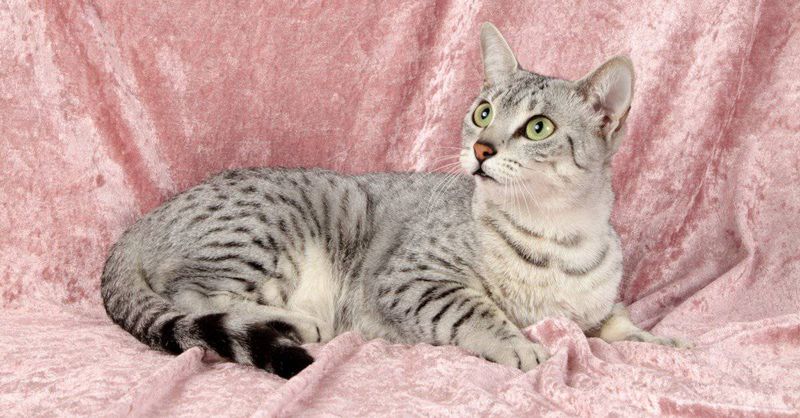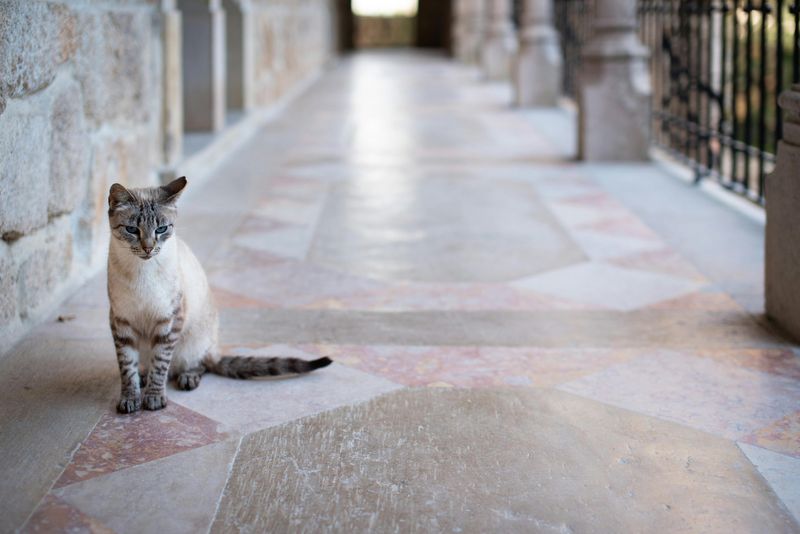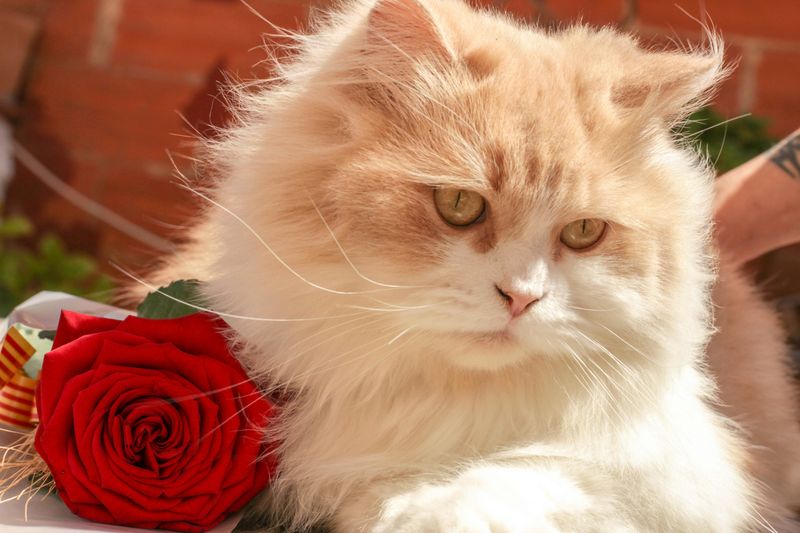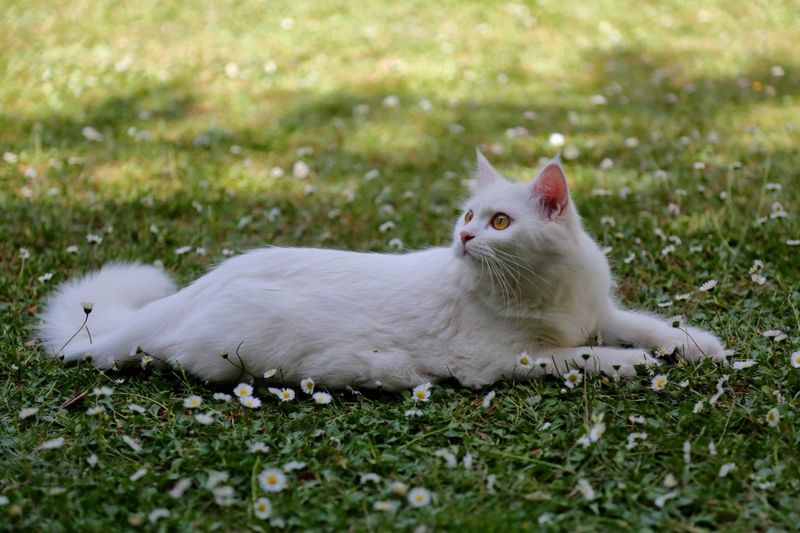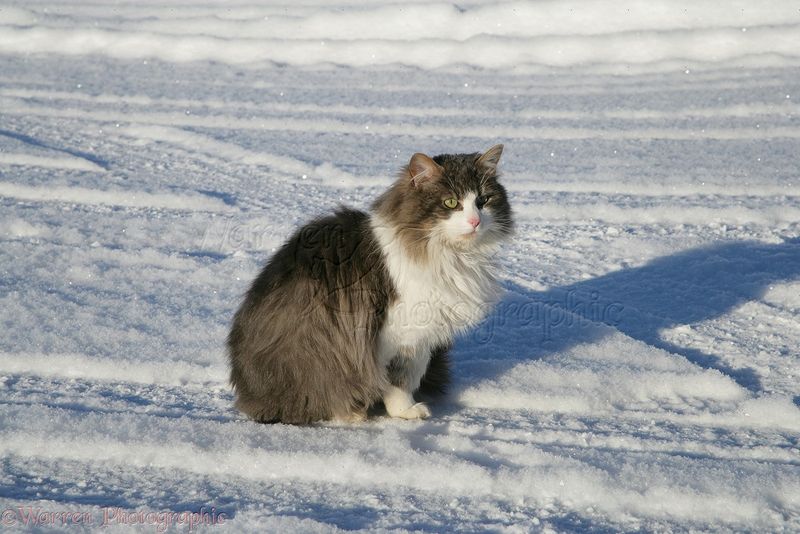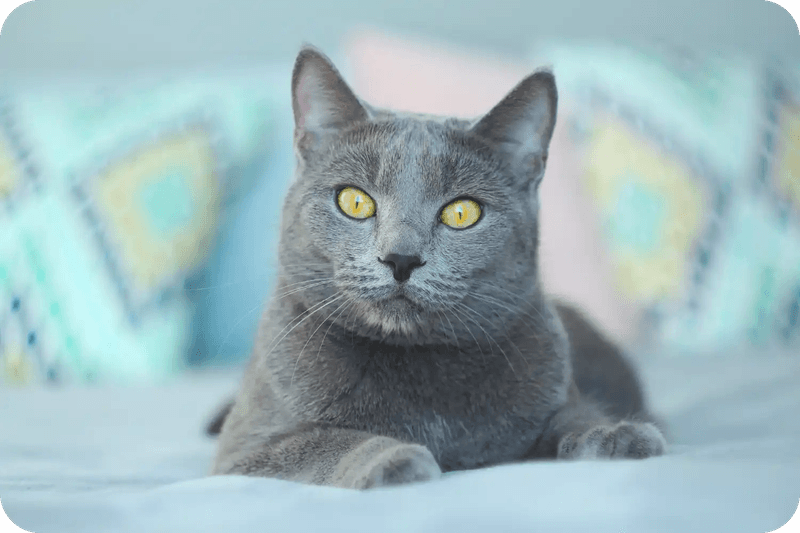📖 Table of Content:
Throughout history, cats haven’t just been pets—they’ve been sacred symbols, royal treasures, and companions of empires. While many of us today enjoy the company of a cuddly tabby or a playful kitten, the feline friends of the past lived quite a different life. Behind palace walls and ancient temples, there were select cat breeds that were guarded, gifted only among nobles, or even believed to house divine spirits.
These weren’t the kinds of cats you could simply adopt or buy at a local market. In fact, some breeds were so exclusive that only kings, queens, or high priests were allowed to possess them. Whether it was due to their beauty, their mystical aura, or their supposed spiritual powers, these cats lived far from the ordinary and were treated with the utmost reverence.
This list explores nine of those elite cat breeds—each with a royal legacy, sacred past, or legendary story that made them the most coveted companions of their time. Get ready to meet the cats who once shared beds with emperors, walked on palace marble, and lounged beside ancient gods.
1. Egyptian Mau
Regarded as one of the oldest domesticated cat breeds, the Egyptian Mau holds a revered place in ancient history. These cats were not just pets but sacred beings in Ancient Egypt, often depicted alongside pharaohs and gods in elaborate murals and tomb paintings. Their striking spots and agile grace made them a symbol of divine protection and power. Maus were even mummified upon death, a privilege reserved for royalty and deities. With eyes like green jewels and a gait reminiscent of a cheetah’s, the Mau exudes nobility from every whisker. Historical records suggest they were present in households of high priests and ruling families, never mingling with commoners. To own an Egyptian Mau was to hold the favor of the gods themselves.
2. Siamese
Elegant and vocal, the Siamese cat hails from the ancient Kingdom of Siam, now modern-day Thailand, where it was a royal treasure. These cats were so highly prized that they lived in temples and palace grounds, tended to by monks and royal attendants. Commoners were rarely allowed to touch, let alone own them—making them sacred companions to the Thai monarchy. With piercing blue eyes and a sleek, cream-colored body accented by darker points, the Siamese exudes an exotic allure. Legends say that when a member of the royal family died, a Siamese would be placed in the tomb to carry the soul into the afterlife. Protective and intelligent, they were not only regal in appearance but emotionally bonded to their elite owners. A symbol of status and spirituality, the Siamese was both a royal and celestial guardian.
3. Persian
Gracing the laps of aristocrats and the pages of ancient Persian art, the Persian cat is perhaps the most iconic symbol of feline luxury. Originating from Persia (modern Iran), this breed was exported to Europe in the 17th century and quickly became a favorite among royal courts. Queen Victoria herself adored Persians, helping to popularize them as status symbols among Europe’s elite. Their flowing, silken coats and calm demeanor made them ideal indoor companions for palatial living. In Persian poetry and lore, they were admired for their serenity and beauty, often compared to precious jewels. They required meticulous grooming, something only those with wealth and staff could maintain at the time. With each purring breath, Persians reminded their owners of refinement, patience, and privilege.
4. Turkish Angora
Rising from the snowy mountains of Turkey, the Turkish Angora once found itself nestled in the opulent halls of the Ottoman Empire. These cats were considered national treasures, often kept within palace grounds and only occasionally gifted to foreign dignitaries as symbols of honor. Their luxurious white coats and intelligent expressions made them prized pets of sultans. One of the oldest natural breeds in the world, the Angora has long been associated with good fortune and nobility. Many believe that they played a role in developing other long-haired breeds across Europe. Their poise and affectionate nature earned them spots beside royalty rather than on common hearths. This cat wasn’t just beautiful—it was an ambassador of the empire.
5. Chartreux
Originating in France, the Chartreux is a rare and deeply dignified breed once whispered to be the silent confidante of monks and nobles. With their plush, blue-grey fur and intelligent golden eyes, they were known as both mousers and companions in Carthusian monasteries. Though never officially confirmed as a “monastery cat,” their serene and stoic demeanor fit the lifestyle of spiritual and noble elites alike. As their presence spread through France, aristocrats began to keep them as pets, appreciating their quiet nature and luxurious coats. Unlike the more flamboyant Persians or Siamese, Chartreux cats charmed with subtlety and grace. Their loyalty was unmatched, often choosing one person to follow like a shadow. They were the dignified, soft-footed sentinels of French nobility.
6. Korat
Native to Thailand and even rarer than the Siamese, the Korat cat was known not just for its beauty but for its spiritual significance. Considered a good luck charm, Korats were traditionally gifted—not sold—and only to individuals of high status, often at weddings or royal ceremonies. With a shimmering silver-blue coat and heart-shaped face, they were said to bring prosperity and happiness. Farmers believed that owning one would ensure a bountiful harvest. Their exclusivity was reinforced by ancient texts that documented their presence only in noble households. Loyal, alert, and deeply intuitive, Korats are as mysterious as they are affectionate. Even today, they carry the aura of something otherworldly and sacred.
7. Norwegian Forest Cat
Brought to legend by Viking longships and Norse myths, the Norwegian Forest Cat is a breed of strength, mystique, and quiet majesty. Said to have been the companions of Norse goddess Freyja, these large, thick-coated cats were believed to bring fertility and love. Their size and hunting prowess made them indispensable aboard Viking ships, where they were treated as talismans. Unlike dainty palace cats, they were rugged yet majestic—nature’s own royalty. Stories tell of them pulling Freyja’s chariot across the skies, an honor no ordinary animal could hold. Scandinavian folklore preserved their status for centuries, revering them as magical and divine. They were the wild hearts of the north, honored with myth and legend.
8. Russian Blue
Emerging from the frosty north of Russia, the Russian Blue was once the coveted pet of czars and the aristocracy. Its silver-blue coat and piercing green eyes created an ethereal beauty that captivated everyone it encountered. Legend holds that they originated in the port of Arkhangelsk and were brought to Europe by sailors, quickly becoming a favorite among nobility. Their calm demeanor, intelligence, and reserved nature made them ideal companions for high-ranking households. Unlike louder or more demanding breeds, Russian Blues are known for their elegance and gentleness. During the Romanov era, they were pampered with the finest care and seen as symbols of peace and purity. Even their silent gaze feels like a relic of royalty.
9. Birman
Whispers of ancient temples echo through the legacy of the Birman cat, a breed shrouded in myth and mysticism. Originating in Burma, Birmans were believed to be sacred temple cats, guardians of spiritual treasures. Monks told of a golden goddess who gifted the breed their striking blue eyes and creamy fur dipped in gold. When French soldiers defended a Burmese temple, grateful priests allegedly gifted them two sacred Birmans in return—bringing them to Europe where they enchanted the French aristocracy. Their gentle demeanor and striking beauty made them an instant favorite among the elite. Each Birman carries the aura of mystery and divine purpose, with soft paws that seem to walk between this world and the next. Their origin may be part legend, but their charm is indisputably royal.

